Introduction to the SEO Guide
Welcome to the digital age and your journey with our ‘SEO Guide’! If you’ve ever wondered how certain pages pop up first in search engine results or how businesses boost their online visibility, you’re about to unravel the mystery. This guide is all about SEO, or Search Engine Optimisation. Let’s break it down!
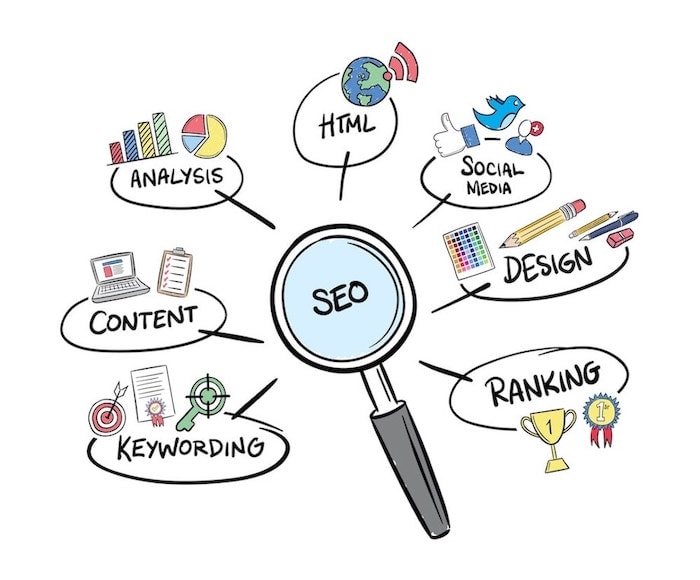
Table of Contents
What is SEO?
SEO, or Search Engine Optimisation, is like giving your website a ‘highlighter pen’ on the internet. When someone types a question or a topic into Google (or any other search engine), SEO helps your website show up in the results. It does this by making sure your site has the right keywords, is fast and user-friendly, and has other websites linking to it. It’s a bit like setting up signs on a highway to help people find your shop.
If you’re looking to start or refresh your understanding, an ‘SEO basics guide’ is an invaluable tool to grasp these concepts more clearly. The better your SEO, the more likely people are to find and visit your website.
Why is My Google Search Important?
Think of the last time you Googled something, say, “best coffee shops near me”. Pages that appear at the top didn’t just get lucky. They’re leveraging a powerful tool: SEO. Through specific strategies, they’ve told search engines like Google that they’re the best answer to your coffee query.
For those just starting out or looking to refine their approach, the ‘Google SEO starter guide’ is a valuable resource. It provides insights directly from the source, helping businesses align their strategies with what Google recommends.
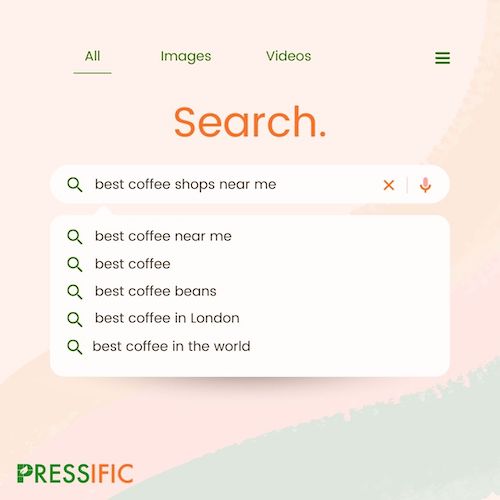
The Four Pillars of Effective SEO: A Guide
SEO isn’t just about keywords. With insights from a robust ‘SEO guide’, you’ll recognize that it stands on four pillars.

1. Collaboration
- Team Dynamics: Successful SEO strategies often result from the collective efforts of multidisciplinary teams. From content creators, SEO specialists, and web developers to digital marketers, each member plays a pivotal role in shaping a website’s online visibility.
- Stakeholder Alignment: Aligning with other departments, especially public relations, sales, and IT, can provide integrated strategies that ensure consistent messaging and optimisation across all digital touchpoints.
2. Systematic Execution
- SEO Audit: Before diving into optimisation, it’s essential to understand your current digital standing. An SEO audit provides insights into your website’s strengths and areas that need improvement.
- Strategized Implementation: SEO isn’t a random set of actions. It’s a well-thought-out plan. Whether it’s keyword optimisation, enhancing website speed, or improving user experience, each action should be based on data-driven decisions.
- Continual Learning: With search engines constantly updating their algorithms, SEO professionals must remain agile, adapting to these changes and updating their strategies accordingly.
3. Tech & Tools
- SEO Software: Tools like SEMrush, Ahrefs, and Moz offer insights into keyword rankings, backlink profiles, and competitor analysis. Leveraging these tools can provide a competitive edge.
- Webmaster Tools: Platforms like Google Search Console and Bing Webmaster Tools help monitor website health, detect issues, and understand search performance.
- Site Performance Tools: Tools like GTmetrix and Google’s PageSpeed Insights shed light on your website’s loading speed, offering recommendations for improvement.
4. Measurable Outcomes
- Key Performance Indicators (KPIs): Establishing clear KPIs, such as organic traffic growth, bounce rate, and conversion rate, can help track the effectiveness of your SEO strategies.
- Analytics: Platforms like Google Analytics provide a wealth of information about visitor behaviour, traffic sources, and content performance. This data aids in understanding what’s working and where there’s room for improvement.
- Feedback Loop: Regularly reviewing performance metrics, gathering feedback, and refining strategies is crucial. What gets measured gets managed and improved.
Understanding and effectively leveraging the four pillars of SEO can provide a structured and robust approach to improving online visibility. With the aid of a comprehensive ‘SEO guide’, one can navigate the intricacies with greater clarity. While SEO is vast and ever-evolving, anchoring strategies around these pillars can pave the way for sustainable success in the digital landscape.
How Does a Search Engine Think? An Insight from the SEO Guide
Understanding the inner workings of search engines can seem complex. However, with guidance from our SEO guide, we’ll simplify it for you
For a website to be ‘visible’, understanding search engine mechanics is crucial.
Imagine a search engine like a giant digital librarian. Here’s how it works:
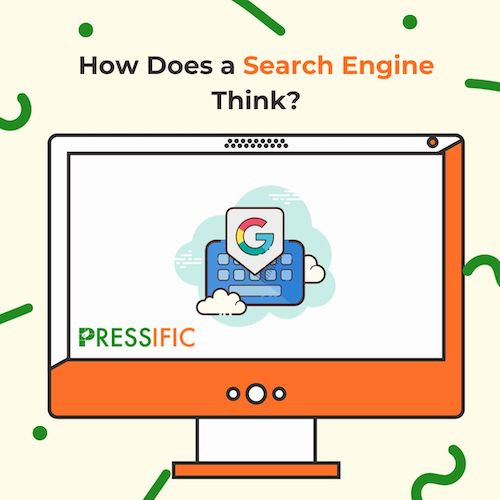
- Exploration: Just like a librarian might look through new books, search engines send out scouts called ‘crawlers’. These crawlers browse the internet to find and understand web pages.
- Organising: Once the crawlers find a webpage, the search engine organizes or ‘indexes’ the information. It’s like adding a new book to a library shelf.
- Answering Questions: When you type something into a search engine, it quickly checks its ‘library’ to find the most relevant answers. It uses special formulas, or ‘algorithms’, to decide which pages are the best match for your question.
- Delivering Results: It then shows you a list of results or web pages that answer your question. The best answers, according to the search engine, come up at the top.
So, when you ask a search engine a question, it’s like asking the world’s fastest librarian to find the best book for you! If you’re curious about delving deeper into how this ‘librarian’ works and the best ways to catch its attention, the ‘ultimate SEO guide’ can be your comprehensive resource.
Research – The Heartbeat of SEO
At the core of any successful SEO strategy lies in-depth research. Just like how a doctor wouldn’t prescribe medicine without a thorough check-up, you shouldn’t dive into SEO without understanding the landscape. Here’s why each research aspect is crucial:

Understanding Your Audience
- Getting Personal: Before crafting any strategy, it’s crucial to understand who your target audience is. This isn’t just about demographics like age or location, but diving deeper into their habits, preferences, and online behaviors.
- Tailoring the Experience: By knowing your audience’s interests, pain points, and desires, you can tailor your content and online experience to resonate with them, making it more likely they’ll engage with your site.
Keyword Insights
- Deciphering Online Language: Keywords are essentially the language of online search. They’re the terms and phrases people type into search engines when looking for information.
- Balancing Demand and Competition: While some keywords may have high search volumes, they might also have high competition, making it harder to rank for them. Research helps find that sweet spot – keywords that are both popular and achievable.
Knowing Your Competition
- Spying on the Neighbors: In the digital world, it’s important to know what your competitors are up to. By understanding their strategies, you can identify gaps in your own approach or discover new opportunities they haven’t exploited.
- Carving Your Niche: While it’s useful to learn from competitors, it’s equally important to differentiate yourself. Research helps pinpoint unique selling points that can make you stand out.
Branding & Goals Alignment
- Unified Messaging: Your SEO efforts should mirror your brand’s voice, values, and goals. This ensures a consistent experience for users, whether they’re reading a blog post, browsing products, or checking out your social media profiles.
- Measuring Success: By aligning SEO strategies with specific brand goals, it becomes easier to measure success. For example, if one of your brand’s goals is to increase product sales, then a successful SEO strategy might focus on driving more traffic to product pages and optimising for purchase-related keywords.
In essence, research is the compass that guides all SEO efforts. Using a reliable ‘SEO guide’ can amplify this research, ensuring it’s on point. It ensures that strategies are informed, targeted, and effective in navigating the vast digital ocean
Crafting an SEO Strategy
When it comes to positioning yourself online, a well-defined SEO strategy is the roadmap that ensures you’re heading in the right direction. Just as a coach wouldn’t send a team onto the field without a game plan, you shouldn’t approach SEO without a strategic foundation. Our ‘SEO Guide’ serves as that comprehensive playbook, offering insights and tactics to make your online presence shine. Let’s break it down:
12 Questions You Must Ask Your SEO Specialist And How Pressific Has Got You Covered
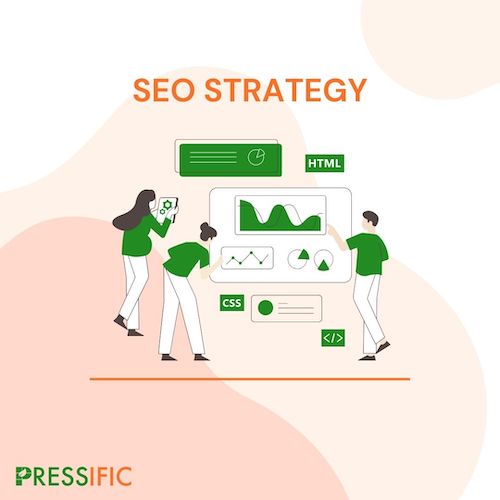
Set Clear Goals
- Vision and Direction: Before anything else, determine what you want to achieve with your SEO efforts. Whether it’s increasing website traffic, boosting sales, or establishing authority in a niche, having clear objectives provides focus.
- Tailored Approach: Once your goals are set, you can tailor your SEO techniques to meet those specific targets. For instance, if brand awareness is the goal, you might prioritize content that’s shareable on social media.
Decide on Metrics
- Quantifiable Success: The beauty of digital marketing, and SEO in particular, is its measurability. Decide on the key performance indicators (KPIs) that reflect your goals. These could range from organic website visits to conversion rates.
- Informed Decision Making: By tracking these metrics, you’re not just measuring success but gaining insights that can inform future strategies. If one approach isn’t working, the metrics will show it, and you can pivot accordingly.
Operational Details
- Resource Allocation: Every strategy has a cost, whether it’s monetary, time, or manpower. Define your budget and allocate resources to different SEO tasks, ensuring you maximise your investment.
- Tool Selection: In the vast world of SEO, numerous tools can aid your efforts, from keyword research tools like SEMrush to analytical platforms like Google Analytics. Select those that align best with your objectives. How to add Analytics read it here.
- Teamwork Makes the Dream Work: SEO isn’t a one-person show. Ensure that roles are defined, and teams (whether content creators, SEO specialists, or web developers) are coordinated and working in harmony.
Stay Updated
- The Ever-Changing Landscape: The algorithms that search engines use and the behaviours of internet users are constantly evolving. What worked a year ago might not be as effective today.
- Continual Learning: Dedicate time to keep up with industry news, updates, and best practices. This proactive approach ensures your strategy remains relevant and effective, no matter how the digital winds shift.
In a nutshell, crafting an SEO strategy is much like plotting a journey. You need to know your destination (goals), choose the best route (methods and tactics), ensure you have the right tools and resources, and be prepared to adapt when the terrain changes. Using an ‘SEO Guide’ like ours can provide clarity and direction, ensuring that every step you take is well-informed. This comprehensive approach ensures your online presence is not just visible, but also impactful
Execution: Turning Ideas into Action
After planning and strategizing, the next step is to dive into action. It’s like having a blueprint for a house – it’s time to start building. If you’re new to this, our ‘SEO Guide for Beginners’ can be your go-to resource, shedding light on best practices and effective approaches. Let’s dive deeper into the key components of executing a successful SEO strategy.

Fresh Content
- Stay Current: Consistently publishing new content ensures your website remains active, relevant, and updated. It’s a way of telling search engines that your website is alive and kicking.
- Meet User Needs: By adding new articles, blogs, or updates, you’re catering to your audience’s ever-evolving questions, interests, and needs. This can help in both attracting new visitors and retaining existing ones.
- Boost Rankings: New content, especially when optimised for SEO, can target specific keywords and phrases, potentially boosting your rankings for those terms.
Optimisation
- Revisit and Revise: Even the best content might need a touch-up as trends change and new information becomes available. Periodically revisiting your content to include fresh data or insights ensures it remains relevant.
- Technical Tune-ups: Beyond the content itself, optimisation also involves ensuring your website is user-friendly. This means checking site speed, mobile compatibility, and internal linking, among other things.
- Improved Visibility: Regularly optimising your content increases the chances of it being discovered by search engines and, subsequently, your target audience.
Trim the Fat
- Clean House: Not all content remains relevant forever. Information may become outdated, or some pages might not be performing as well as expected. It’s beneficial to declutter every now and then.
- Better User Experience: By removing irrelevant or outdated content, you ensure your audience only gets the most accurate and relevant information, enhancing their experience on your site.
- Efficient SEO: Search engines appreciate well-maintained websites. By keeping your site clean and up-to-date, you’re signalling to search engines that you prioritize quality, which can positively influence your rankings.
In conclusion, execution is the crucial phase where plans become reality. Leveraging insights from an ‘SEO strategy guide’ can enhance this process. It’s about taking those carefully laid plans and turning them into actionable steps, ensuring your website isn’t just present but performs at its best in the digital arena.
The Watchtower: Monitoring and Evaluation
Just as a watchtower provides a high vantage point to observe and guard a territory, overseeing your website requires a vigilant, ongoing commitment to ensure everything runs smoothly and efficiently. Here’s why each aspect of monitoring and evaluation is vital:
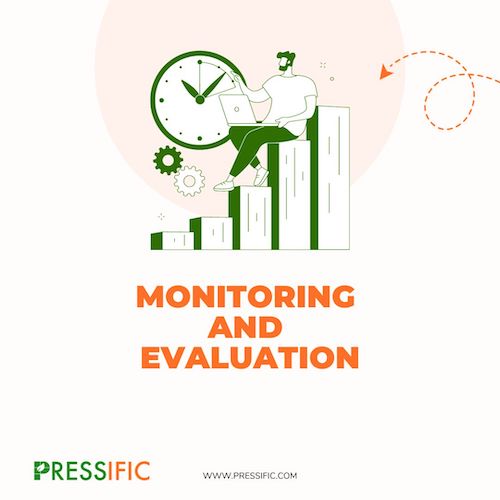
Stay Alert
- Digital Health Check: In the digital realm, various issues can crop up without warning. This includes broken links, slow-loading pages, or server downtimes. By staying vigilant, you can catch and fix these issues before they negatively impact your visitors or your search engine rankings.
- Traffic Trends: A sudden drop in website traffic can indicate a problem, perhaps stemming from a search engine algorithm update or an overlooked technical glitch. Monitoring allows you to swiftly identify and address the root cause.
Regular Check-ins
- Data-Driven Insights: Using analytics tools, like Google Analytics or similar platforms, you can regularly check how well your SEO strategies and content are resonating with your audience. These tools provide valuable data, such as which pages users visit most, how long they stay, and the paths they take through your site.
- Adapt and Refine: Regular evaluations allow you to see what’s working and what isn’t. Maybe a specific type of content is drawing more visitors, or perhaps certain keywords are driving more traffic than anticipated. These insights enable you to fine-tune your strategies, capitalizing on strengths and addressing weaknesses. Also read: What is a Low Content Page and How It Impacts SEO: A Complete Guide
In essence, think of monitoring and evaluation as the pulse-check of your website. It ensures you’re always informed, ready to celebrate successes, and prepared to tackle challenges head-on. By referencing a trusted ‘SEO guide’, you can make this process even more streamlined, keeping your digital presence strong and vibrant
In Conclusion: The Ongoing World of SEO – Insights from Our Guide
SEO is like tending to a garden; it requires constant care and attention. As user behaviours, search engine algorithms, and the digital landscape change, adaptability is key. Keep evolving, keep learning, and keep growing!
With the right ‘SEO Guide’ by your side, navigating this ever-changing landscape becomes a more informed journey. So, continue to use this guide as your compass in the vast world of SEO.
By breaking down the intricate details of SEO into digestible sections, this ‘SEO Guide’ aims to enlighten readers on the magic behind search engine results. Whether you’re a newbie or just looking to brush up on the basics with our guide, understanding SEO is your ticket to the digital forefront!






